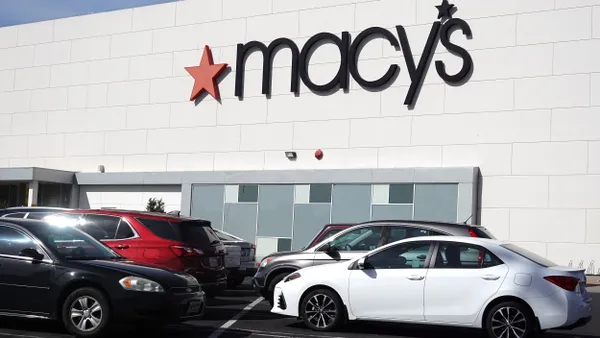Dive Brief:
-
J.C. Penney is suspending all contactless payment options, according to a statement the company sent to Retail Dive. TechCrunch first reported the story after a customer complained on social media about the inability to make a purchase with Apple Pay at a J.C. Penney location.
-
J.C. Penney said customers can continue to pay manually by inserting or swiping their physical credit cards at the company’s point-of-sale terminals in stores, “an option used by the vast majority of J.C. Penney shoppers.”
-
According to a 2017 Visa EMV News report, every U.S. merchant that accepts contactless payments needs to support EMV contactless chip functionality as of April 13, 2019. A J.C. Penney spokesperson confirmed that the retailer has suspended contactless payments to comply with the mandate "until a later date."
Dive Insight:
Contactless payments remain a mixed bag for retail. Since J.C. Penney began testing the technology in 2015, other retailers like 7-Eleven, Staples, and CVS have adopted it. Overall, however, contactless payments haven’t taken off in the U.S. to the level they have in other countries.
In Canada, nearly 70% of domestic transactions of less than $50 are paid via contactless payments; meanwhile, 80% of check out terminals in Costa Rica and nearly all of the checkout terminals in Poland have a tap-to-pay option. However, adoption is not as wide in the U.S. according to Visa.
Despite the lukewarm reception of contactless payments in the U.S., Apple Pay has experienced continuous growth. According to a January press release from Apple, 74 of the top 100 merchants in the U.S. accept Apple Pay including several grocery and drugstore chains plus Target, Best Buy and others. For consumers who’ve opted to use the payment method in the U.S., tap-to-pay is most commonly used for food, grocery, fast food restaurants and pharmacies, the Visa report found.
It is possible that the adoption of contactless payments will grow as mobile and wearable technology continues to penetrate the market, according to the Capgemini 2018 Payment Trends report. But either way, the move comes as retailers also integrate competing services like Google Pay and Amazon Pay.











